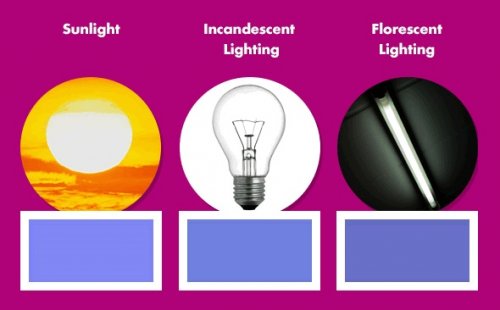I recently tested a group of 12 year olds for colour blindness, fully expecting one of the boys to be affected. One in 12 boys/men are colour blind, while one in 200 women are affected. We also had fun with some demonstrations of how surrounding colours can dramatically affect the colour perceived.
This can sometimes cause issues when paint is applied on a wall. Curtains, furnishings, and light sources can all affect how a colour is perceived. Colours look different on a small chip versus a whole wall, and there is also the issue of metamerism. Metamerism is the word used to describe how colours can look different under different light sources. This is most noticeable under sodium street lamps where red cars look brown. Some coloured pigments are more metameric than others, and this is the reason that test pots are the best indication of the applied colour, as the pigments in the test pot will be the same as in the finished paint. Magazines or photos can look quite different as they are printed with ink using different pigments.

An example of different light sources resulting in colours that appear to be different.
The recommended method for choosing colour is to paint a testpot of colour onto a large card and hold it in the room under different light sources and at different times of the day and night.
Alternatively, up to four free large colour swatches can be ordered from the Dulux website. These are a true and accurate representation of the colour that will be achieved, and again we suggest the homeowner tapes them next to furniture and soft furnishings at different times of the day to help them on their colour journey.




























 Most Popular
Most Popular Popular Products
Popular Products


